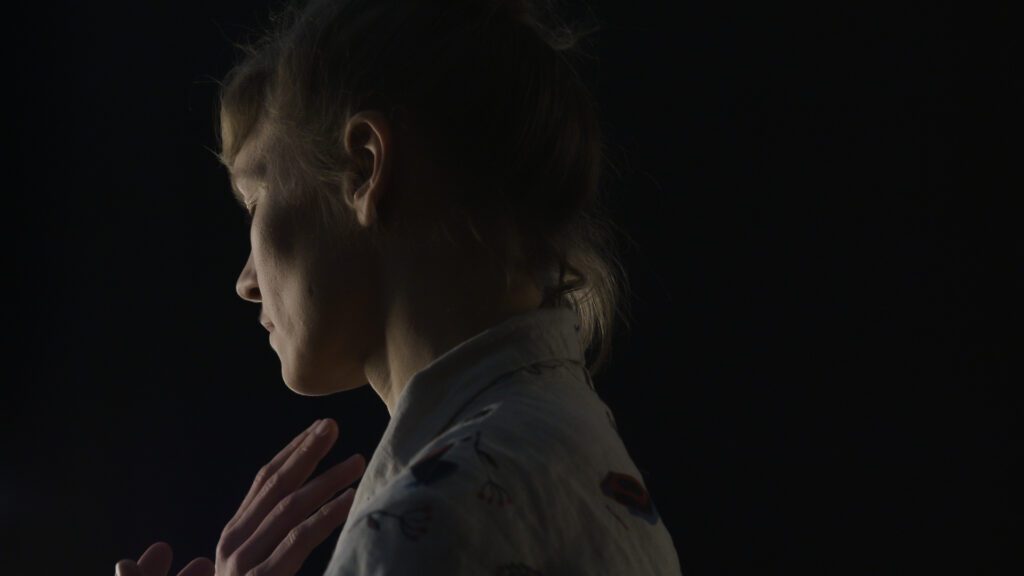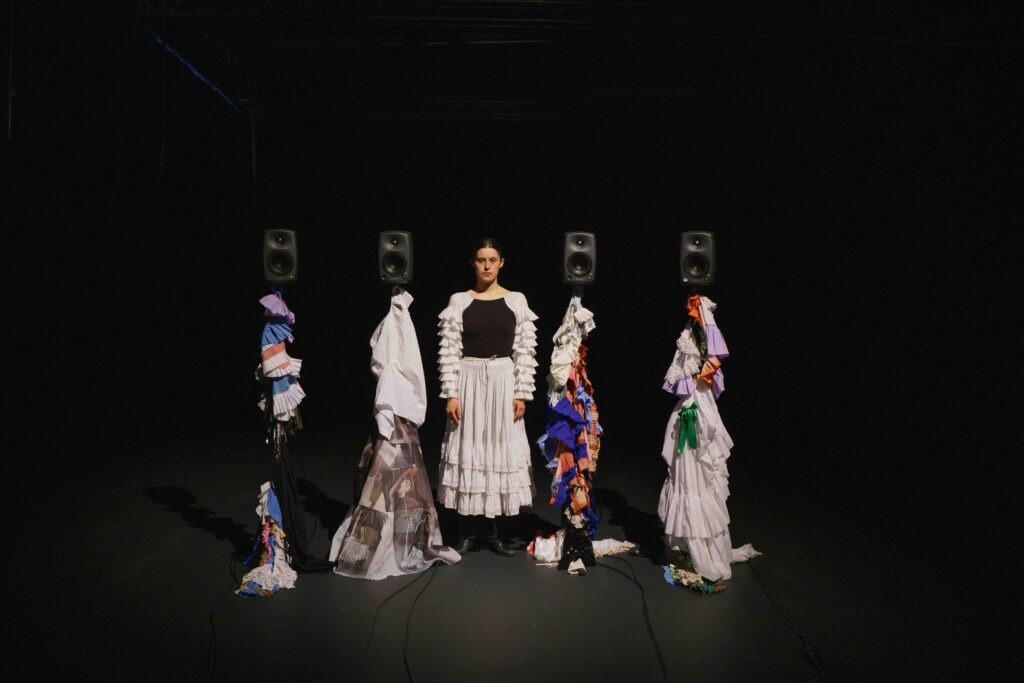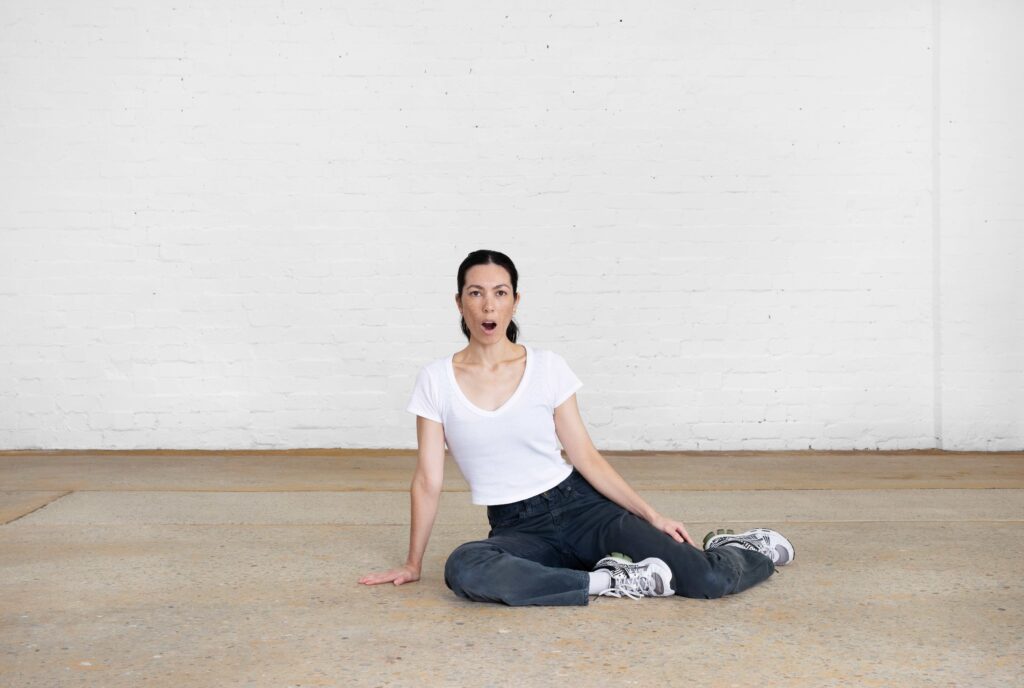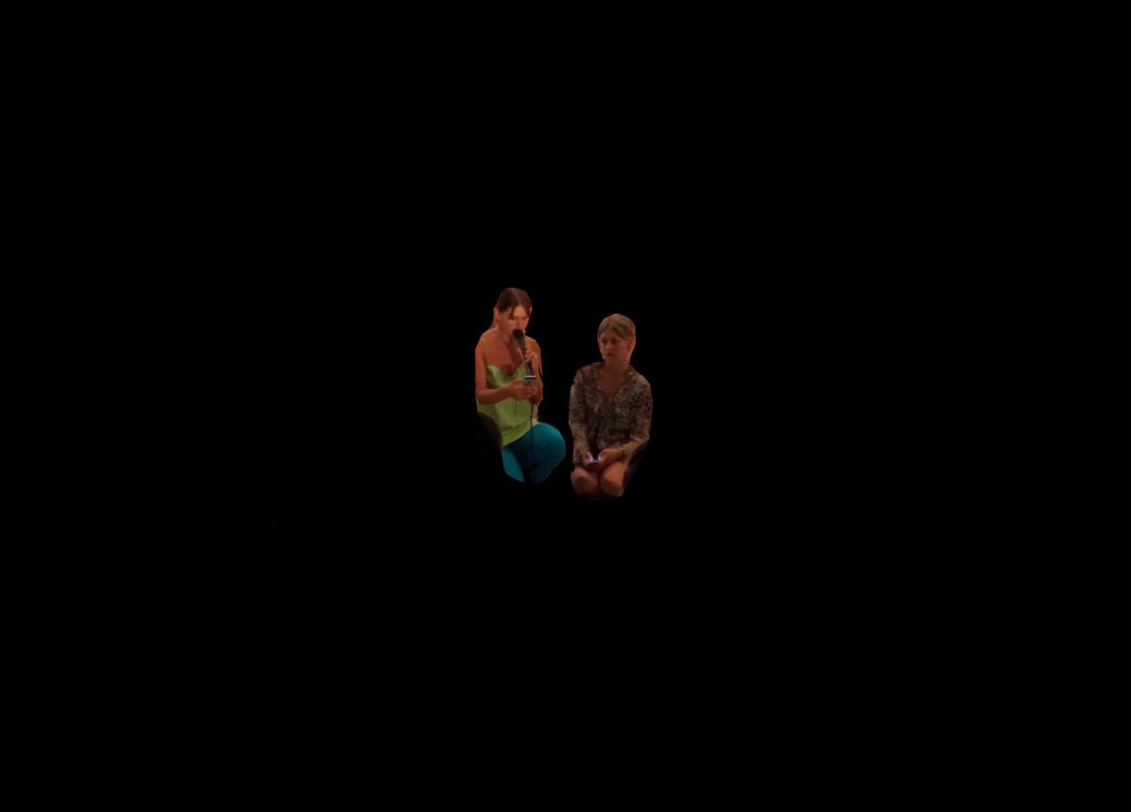The dancers and choreographers Karis Zidore and Emilia Gasiorek have worked for several years on thecarrierbag festival with a focus on how we meet and gather around performances. Now in its third edition, the festival will fill the huge space of Fabrikken for Kunst og Design with performances, interventions, a concert, a DJ and dinners.
Danseatelier is situated in a charming backyard at Blegdamsvej, Nørrebro. I’m invited here to meet the dancers and choreographers Karis Zidore and Emilia Gasiorek. It’s here that thecarrierbag festival has previously taken place. We are sitting in the middle of the dance studio at a desk, where Karis and Emilia’s laptops are placed alongside a plate with watermelon, biscuits and our glasses of water. The windows are open, and I can feel a soft breeze in the hot summer space. I start the interview by asking Karis and Emilia to talk about their intentions and thoughts behind thecarrierbag festival.
Mette Garfield [MG]: When did you start thecarrierbag festival? And why?
Karis Zidore [KZ]: I guess technically the festival started in the summer of 2016 at PAF (Performing Arts Forum), a space in France, where we both participated in Indigo Dance, a week-long dance festival. From here ideas and thoughts around how to organise a space, a residency and a festival appeared. These ideas merged together with our thoughts around how we would organise Danseatelier, a collective studio in Copenhagen which we are both a part of and which we had just started a year earlier (2015) together with 9 other choreographers and colleagues. We started Danseatelier from a shared interest in how to organise around artistic production. We wanted to counter the precarious project-logic that dominated the dance field and still does today. We thought about how Danseatelier could hold and support our artistic practices by creating structures that could carry us. thecarrierbag festival sprung from the same urgency and curiosity into that which holds, but for the festival we wanted to implement these thoughts into how we hold and meet art works. Because just as organisation is not neutral, nor is the meeting between audiences’ bodies and an artwork. The body is guided, choreographed and curated, but usually this is not as visible as the art works themselves.
Emilia Gasiorek [EG]: With thecarrierbag festival we are interested in the live moment where you encounter a piece, and everything that live moment entails. From the feeling of entering a space, to how your body is seated, to the atmosphere in the space. All spaces contain codes or messages or invisible structures that guide the body in a certain way, and they are always present, whether outspoken or not. And they all give shape to the experience of the live moment. With thecarrierbag festival our interest has been to highlight this live moment and the space around the pieces.

MG: Could you give some examples of how you have worked with these interests in the previous festivals?
KZ: For the first edition, which took place in 2017 at Danseatelier’s very first space in Valby back, we proposed that during the workshops the participants could be in the space in three different states. The states were that you could either propose, follow or linger. This was a very literal attempt to explore hierarchies and positions that are anyways always present.
EG: For the second festival in 2019, which also took place at Danseatelier, but this time at our current Nørrebro studio, we included interventions as part of the program. Interventions are small performative actions or curated situations. They could range from social dancing to collective readings or other activations of the space and they highlighted the space in between the performances. We have also always had food and a dance party in the end — both of which serve the purpose of emphasising the convivial space around the performances.
KZ: The dinner was also a way for us to underline how Danseatelier is both a public venue but also a ‘homey’ intimate space due to it primarily being a working studio for us members. In this way the audience were invited in as guests in that ‘home’ and here the dinner functioned as a welcoming gesture. For this year’s edition, even though it is taking place in a much bigger and less intimate room out at Fabrikken for Kunst og Design, we still hold onto some of these elements of the ‘home’, such as the dinner. So even though we change the setting, we are still interested in working actively with the intersections of different spaces: the home, the theatre — and for this year — the industrial, public space. This becomes visible in Anna Moderato’s sculptural set-design for this year’s festival.

Dirgy Dancing by Lisen Ellard. Photo: Milja Ross
MG: Why is the festival called ‘thecarrierbag festival’? I was of course thinking about Ursula K. Le Guin’s, The Carrier Bag Theory of Fiction?
EG: Yes, the title of the festival is inspired by that essay of Ursula K. Le Guin. Around the time of initiating the festival, Karis and I read two texts and these texts ended up laying the conceptual foundation for thecarrierbag festival. The two texts were The Carrier Bag Theory of Fiction, as you mentioned, and the other was by Bini Adamczak’s text On Circlusion. In this text the word circlusion is proposed in order to name the antonym to penetration. And by naming it, the text underlines how this word is both missing from our language and how circlusion is an active act. In the context of the festival, we use it to mean the act of curling or wrapping around pieces and situations.
KZ: The two texts resonated with us and spoke to our interest with the festival and that which holds around. With Le Guin it’s the carrier bag as an overseen tool for survival in the story of evolution, and for Adamzcack the focus is on giving the action of circluding visibility and agency. For us the festival becomes that which carries and holds. We look at it as a container that places things, pieces, situations and people next to each other, in interplay and relation.
MG: Could you tell me about how you work together? I can see from the curatorial statement that you work with the idea of curation as selection and curation as situation…
EG: Curation as selection is about reminding ourselves that curation involves choosing. It’s a process of picking works for a programme, where selecting is an active choice. Curation as situation refers to the idea that we, as curators, are proposing and creating moods, atmospheres and situations for the audience to enter into. And these moods, atmospheres or situations are sculpted by the choices that we make.
KZ: Besides trying to make these two concepts visible at the festival for the audience, they have also become strategies of a more introspective character in our artistic research. We have used these two modes of curation as tools for ourselves in order to better understand how we make decisions, from which place and why.
EG: We also work with the concept of affective curation which is woven into the idea of curation as selection and curation as situation. In relation to curation as selection, we searched for a form of ‘affective hook’ when we selected works. First, we listened to see if the works triggered an affective response in us, and when it did, we turned to that feeling. These could be sensations that crept up the edges of our skin or intense emotional washes. Affect also plays a role in curation as situation in terms of an awareness towards how the performances create moods when they are placed in the space.
KZ: Affective curation is new for us for this year’s edition, although I think we have actually always worked with the affective in our practice, without directly using the term. The term itself was presented to us by the dramaturg we have worked with this year, Storm Møller Madsen. Storm was invited in to help us look at our oversights as curators and to meet the festival from afresh after 7 years of building up habitual patterns and vocabulary. The idea behind having a dramaturg on board comes from a concept of working with the festival as a piece in itself. We have done that in order to look at the choices we make as curators as something that does something and give shape to a final ‘piece’. Usually, with organising and curating these choices are not as visible as when you see a performance on a stage, where you are not in doubt about who made the artistic choices. But as we also mentioned earlier, of course these choices we make as curators give shape – both to the space, as well as the program, the mood, and how the bodies are placed in relation to the stage. So yes, the choices of working with both a dramaturg and a scenographer this year has been a way of borrowing roles from the logic of performance making, of making a piece for a stage, only it’s a festival.

Masterpiece by Luisa Fernanda Alfonso. Photo Harriet Meyer
MG: This year the festival will be at Fabrikken for Kunst og Design. Fabrikken is a much bigger space than Danseatelier which is where the previous editions of the festival have taken place. Could you tell me a little more about the choice of changing location?
EG: The decision to change location and place the festival in a larger space comes from a number of experiences from the last edition of the festival. Last time the festival took place in Danseatelier and the room quickly became full and crowded. This had consequences for how the works could unfold and how they were perceived. In contrast, the space at Fabrikken is vast, airy and spacious. We are keen to transfer some of the signifiers of the theatre into the space at Fabrikken. There will be a stage in the centre surrounded by theatre lights — like an island in a vast industrial space. The location at Fabrikken also allows us to play with these intersections of spaces from the industrial space, to the theatre, to signifiers of the home.
KZ: Fabrikken also has a specific atmosphere. It’s melancholy and airy. So besides the interests mentioned before, we also just felt drawn to the space, and the state it puts our bodies in. There was definitely an affective hook there. The vastness of the big hall at Fabrikken also means that there is a lot of space all around the stage, which makes you see the stage from all sides and notice how the stage is staged. Like a prop in this piece we call a festival.

Pattern Recognition by Angela Goh. Photo: ‘Angela Goh, Pattern Recognition, 2023, Image courtesy of the artist and Fine Arts, Sydney’
